
Leftover Scraps?
If you live in an apartment or just don’t have a yard, you’re probably envious of those who have their own personal gardening areas for planting and regrowing fruits and vegetables. After using a fruit or vegetable, we usually throw away any leftover scraps. But did you ever think that you could use these scraps to regrow fruits and veggies over and over again?
Yes, it is possible and can be quickly done, even in your own kitchen. Consider the accessibility, the savings, and the knowing that nothing toxic goes into your meals. There are actually many fruits and vegetables out there that you can regrow from scraps.
Yes, even without a garden! It’s accessible, sustainable, not to mention delicious. So before you throw out those scraps, check with our list first to see if they’re something you can regrow in your home. You can even make it a fun experiment for the family if you have any kiddos running around! Keep reading to see which 9 leftover scraps we’re talking about!
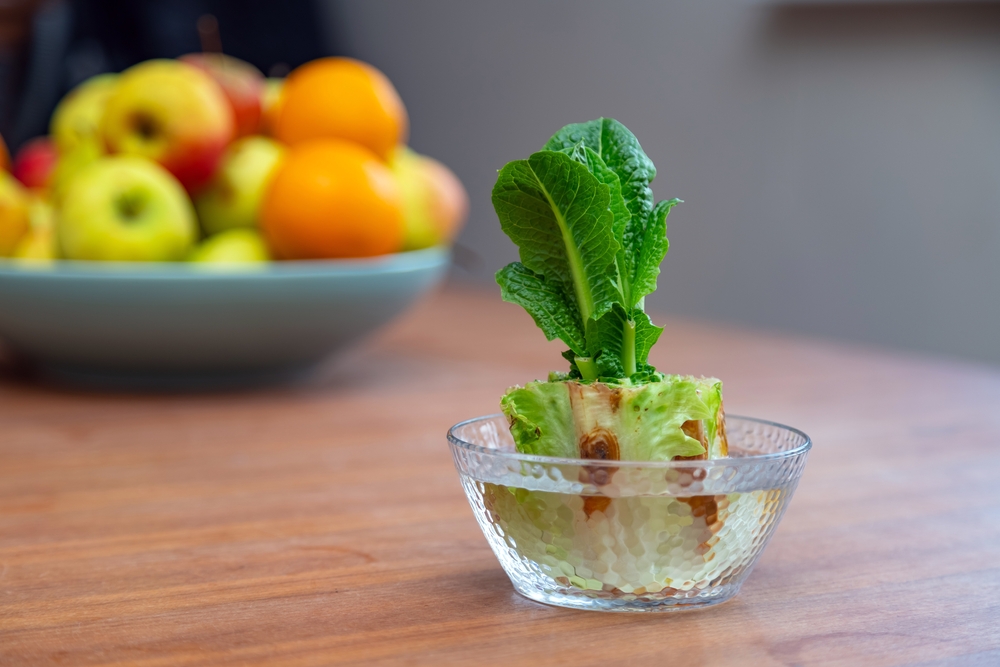
Leftover Scraps: Lettuce
You can regrow lettuce from the bottom of the stump. When you buy a head of lettuce, you can place the base or spare leaves in a basin of water in a warm in a sunny location. Refill the water if the level is below half an inch.
When new leaves begin to regrow in a few days, roots will form, and you can then transplant your new mini lettuce plant into the soil. When it’s time to harvest, simply cut the leaves, leaving them about 2 inches long, and let the plant grow again. If the plant bolts and starts forming a seed stalk, it’s time to start another one.

Leftover Scraps: Celery
The same goes for celery as well. This plant can grow from the residual base after you’ve used up your celery. Just set the bottom in water until the roots start to form, then transplant into some soil.
Let your plant grow until it’s large enough to be harvested, and then enjoy your fresh celery made out of leftover scraps! Celery can be regrown by cutting off its base and placing it in a sunny spot in a bowl of warm water. Some new leaves in the middle of the base will begin to form and thicken within 5 to 7 days. Easy as pie!
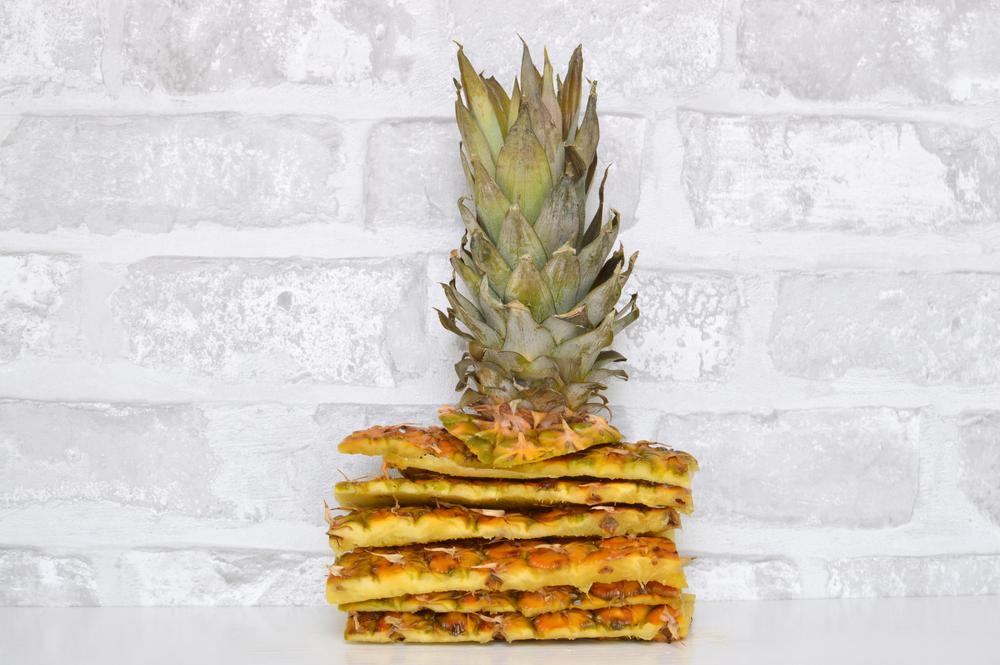
Leftover Scraps: Pineapples
This is another fun and delicious plant to grow from scraps. Simply cut the top off a pineapple and balance it in a glass of clean water. Make sure to keep the water clean and fresh until roots begin to form. Then place the pineapple top in the soil up to the base of its leaves.
Water it thoroughly and put it in bright, indirect sunlight. Keep it moist until new roots begin to develop. This process should take about two months, 6-8 weeks, for roots to fully show. You can check for rooting by gently pulling the top to see underneath.
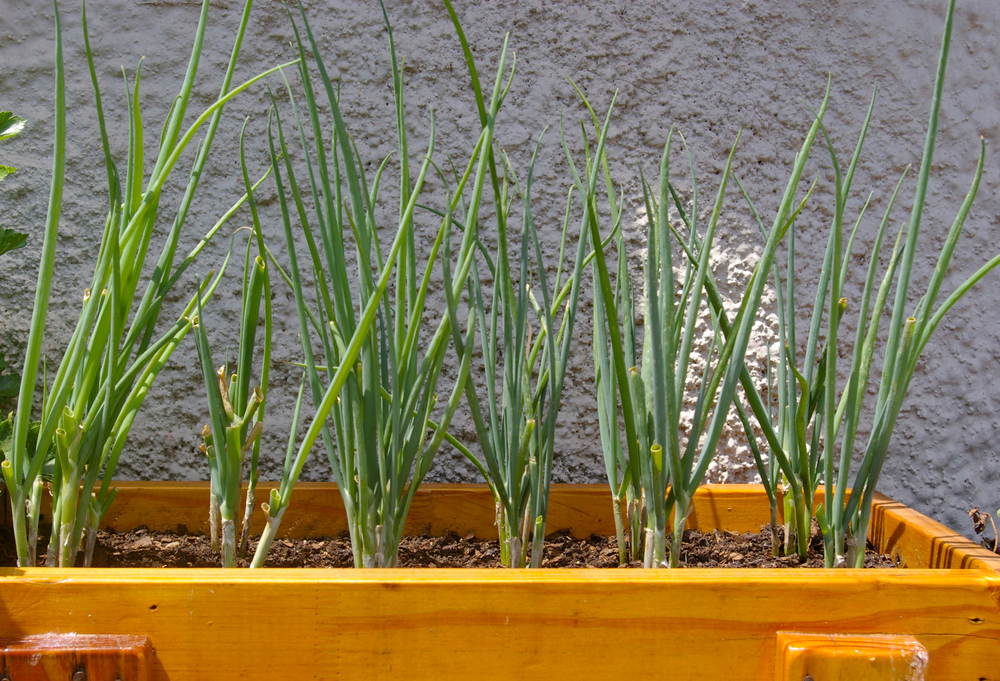
Leftover Scraps: Onions
You can regrow onions from the bottom of your onion. Just cut off the onion’s bottom, let it dry for a few days, and plant it in some soil. These yummy flavor additions can also be regrown from the root base with about a quarter-inch of the onion attached.
Set it in some warm water until roots begin to form, then transplant and cover with potting soil. You can trim the onion greens for green onions or let a new bulb form. You’ve probably noticed a pattern here. The base of the roots is key!
…Psst, check this out!

Leftover Scraps: Ginger
You can regrow ginger by soaking chunks of it overnight in water and then transferring them to a pot with dirt, in a sunny and warm place. Another option is to plant just a two-inch piece of ginger root that can turn into a full-blown ginger bush with just a little bit of patience. Imagine all that ginger just from some leftover scraps!
Just be sure to use organic ginger for it to sprout, and choose a piece that has a bud. Soak the ginger in some water until the bud begins to swell, then plant it with the bud and half the root on the surface of the potting soil. Roots will form under the source, and they will begin growing.
…For some more great tips on what to do with your leftover scraps, check out: Cooking with Scraps: Turn Your Peels, Cores, Rinds, and Stems into Delicious Meals
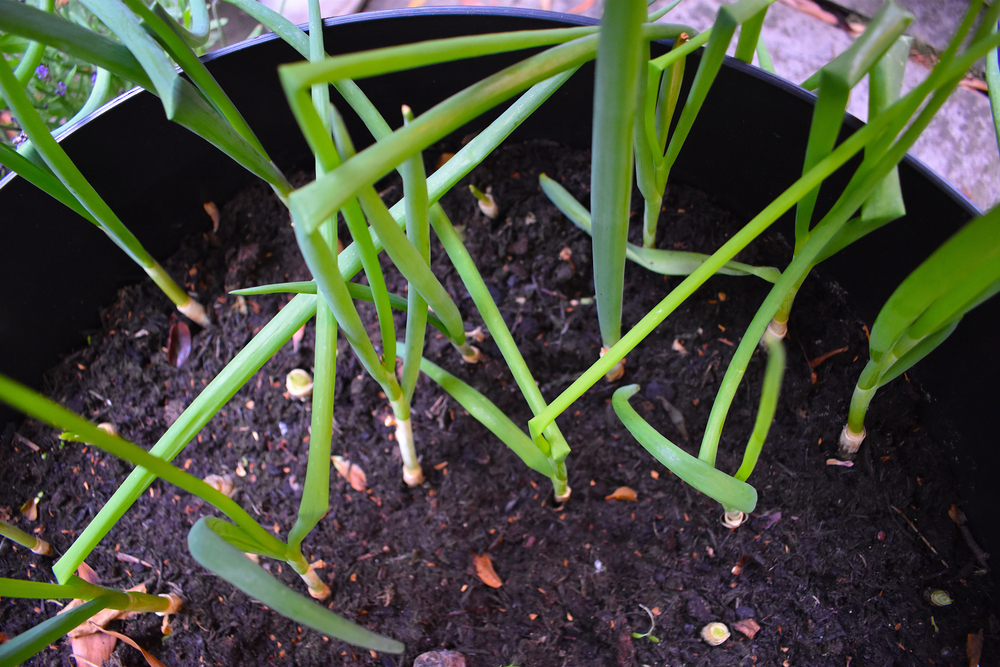
Leftover Scraps: Garlic
You can regrow garlic sprouts from just a single clove of garlic. Just place your sprouted garlic cloves in a glass with a little bit of water and wait for the shoots to begin growing taller. But, you can also plant garlic cloves directly in some soil. If you’re a garlic fan, you know that each head has a few cloves.
Just plant individual cloves and let them grow until the garlic head has fully formed. If the garlic attempts to flower, pinch off the flower stalk, and let it keep growing until the stalk starts dying back. Then harvest and dry your fresh garlic. If you want garlic faster, the green leaves can be harvested throughout the season.
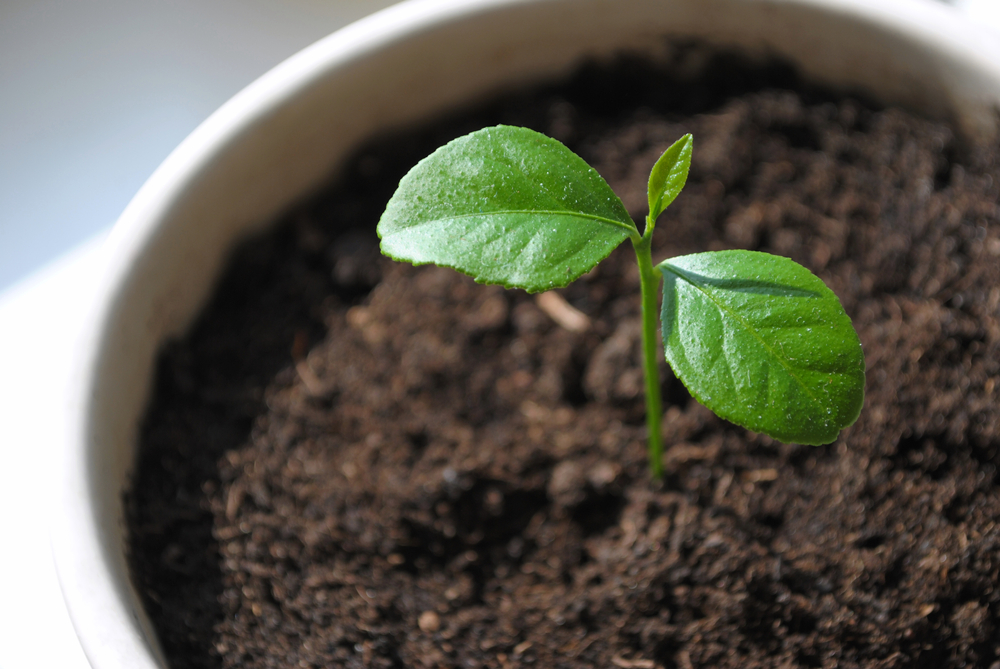
Leftover Scraps: Lemons and Oranges
Lemon and orange trees can be effortlessly grown from a simple seed. Simply take the seed from your most recent lemon or orange and put it straight into some potting soil and water. Make sure you don’t let any citrus seeds dry out before you plant them, or they may not germinate. Let them grow and transplant as needed until the citrus begins producing that delicious fruit.
Another great tip we’ve heard is to put the seeds on a wet paper towel, insert them in a zip-lock bag, and put the bag in the fridge until you see tiny roots pop out of the seeds. Once this happens, take them out and put each one in some potting soil…and watch that little tree grow!
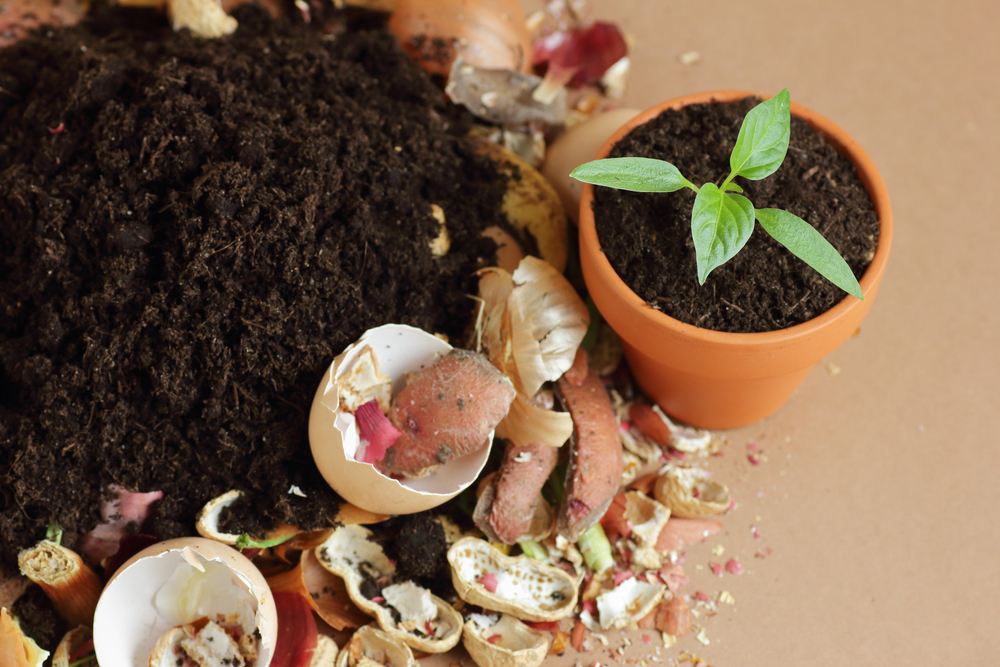
Leftover Scraps: Potatoes
Tiny roots from this vegetable can be grown from a single “eye.” Some traditional potatoes can be sprayed with an anti-sprouting chemical, which prevents eye formation.
Which is why if you want to grow your own potatoes, it’s best to choose a potato that you can see is already sprouting or an organic option if you can find one. Cut the eye off the potato with a bit of the flesh still attached to it, drop it into your potting soil, cover it, and regularly water. You will soon see the start of a potato plant. Just remember that you may need a larger container than usual for this one.
This goes for sweet potatoes as well. Just suspend the root in water, with at least one sprout near the top of the potato. A simple framework of toothpicks works well for this, and once the sweet potato starts growing, you can just transfer it to a pot or the ground if you are in a warm enough climate.
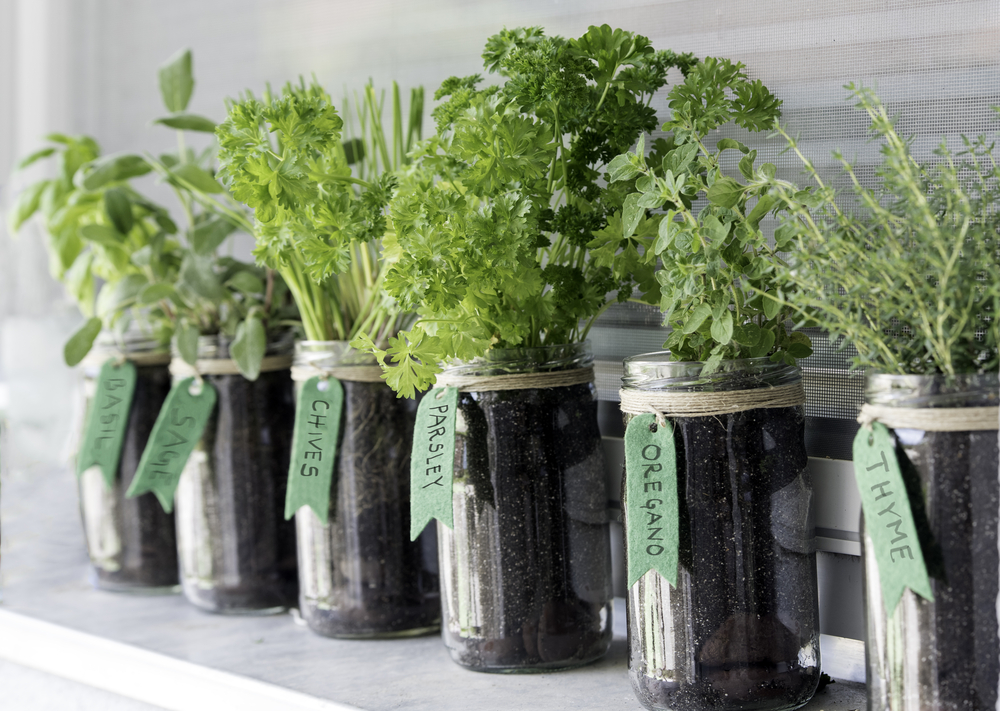
Leftover Scraps: Green Herbs
You can regrow cilantro just by placing their stems in a glass of water. When the roots begin to grow long enough, you can transfer them to a pot with soil in a sunny area. But you have to be patient and wait a few months for harvest.
The same goes for basil. You can regrow it by putting the basil stems with leaf nodes in a glass of water and placing them in a sunny area.
These beauties can often be rooted from a 4in sprig. If you’re successful, you’ll see little white roots begin to form along the length of the stem. Once the roots are formed, that’s how you know it’s time to transplant your new herb plant into potting soil.
Keep any herbs in a sunny location and enjoy watching your herb garden grow. Don’t be afraid to experiment and see what will root and what won’t. You may also find that it takes more than one attempt to get the sprig to root and grow.
Any thoughts on these easy tips to regrow leftover scraps? Have you tried any of them? Let us know what you think in the comments section below!
Also Check Out: 11 Cancer Causing Foods You Weren’t Aware Of








